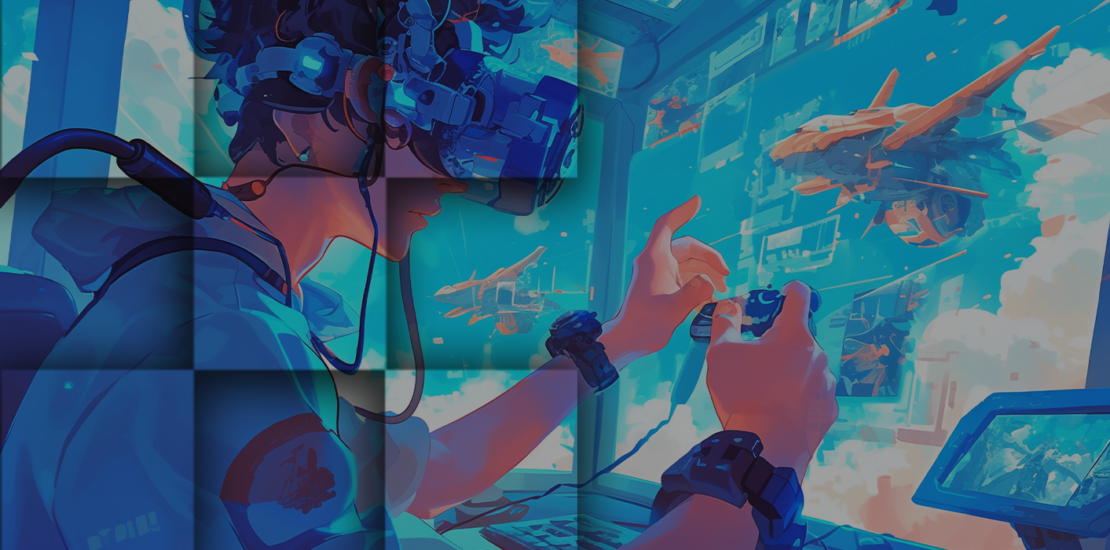Building a Memorable Art Style: How to Make Your Game Stand Out
- May 23, 2025
- Posted by: iXie
- Category: Game Art

At any gaming expo, countless titles fight for attention. But only a few truly stand out not because of marketing spend, but because of a distinct visual identity. Street Fighter’s bold characters, Limbo’s haunting monochrome, and Cuphead’s hand-drawn animation didn’t just define their genres; they became cultural icons.
As high-fidelity graphics become standard, differentiation isn’t about resolution. It’s about art direction that drives engagement and recognition. Whether it’s Journey’s dreamlike landscapes or Inside’s stark minimalism, a game’s aesthetic is no longer a secondary feature; it’s a strategic business decision.
With thousands of releases each year, a strong art style is a competitive advantage, fueling organic marketing, increasing shareability, and extending a game’s reach into merchandising and adaptations. A visually forgettable game, no matter how well-designed, risks fading into obscurity.
But crafting a standout art style requires more than creativity. It demands strategic execution. How can developers ensure their game remains relevant in an era of visual saturation? Let’s break it down.

Contents
- 1 The Business Impact of Art Direction in Gaming
- 2 Defining Your Game’s Artistic Identity
- 3 Selecting the Right Art Style to Reinforce Game Design
- 4 Optimizing Art for Performance and Scalability
- 5 Playtesting for Visual Clarity and Player Experience
- 6 Leveraging Art for Branding and Market Longevity
- 7 AI, Procedural Generation, and Emerging Trends
- 8 Art as a Competitive Differentiator
The Business Impact of Art Direction in Gaming
Art direction in games isn’t merely an aesthetic consideration; it is a strategic investment that shapes marketability, monetization, and player retention. In an industry where thousands of games compete for visibility, a distinct art style is often the first hook that captures attention, encourages player engagement, and establishes brand presence.
A well-defined artistic identity provides clear business advantages:
- Higher Market Differentiation: Visually distinct games stand out in crowded digital storefronts and on social media, making them more recognizable and memorable.
- Increased Player Engagement: Players are naturally drawn to visually appealing experiences. When a game’s art style resonates, it enhances immersion, strengthens emotional connections, and encourages extended playtime.
- Stronger Organic Marketing Reach: Eye-catching art styles generate more social shares, word-of-mouth recommendations, and user-generated content, amplifying a game’s reach without additional marketing spend.
- Extended Revenue Streams: A distinctive visual identity opens opportunities beyond game sales, enabling expansions into merchandise, cross-media adaptations, and long-term brand growth.
Developers who treat art direction as a core business strategy can position their games for lasting commercial success, balancing creative vision with market considerations.
Defining Your Game’s Artistic Identity
Before committing to a visual direction, developers must establish a cohesive artistic identity that aligns with the game’s mechanics, narrative, and target audience. This requires addressing three fundamental questions:
- What emotions should players feel while playing? A game’s aesthetic must reinforce its intended mood—whether it’s the eerie solitude of Inside or the vibrant energy of Hades.
- How does the art style enhance gameplay? Readability is critical—players should be able to quickly distinguish between interactive elements, enemies, and environmental details.
- Who is the target audience? Different player demographics respond to different artistic approaches. Hollow Knight’s hand-drawn aesthetic appeals to indie fans, while The Last of Us caters to AAA audiences with cinematic realism.
A common pitfall is chasing trends rather than crafting an original vision. Many games attempt to replicate the style of successful titles, but imitation rarely leads to long-term impact. Instead, developers should seek inspiration from unexpected sources such as fine art, architecture, historical illustrations, or nature. Cuphead didn’t become iconic by mimicking other games; it carved out its own identity by drawing from classic 1930s animation, making it a standout in an industry oversaturated with pixel art and hyper-realistic graphics.
Selecting the Right Art Style to Reinforce Game Design
The best art styles complement gameplay mechanics and storytelling. For example, Dark Souls employs muted colors and high-contrast lighting to reinforce its oppressive atmosphere, while Journey’s warm color palette evokes a sense of wonder and solitude. Choosing an art style isn’t just a creative preference; it must be an intentional decision that enhances player interaction.
While pixel art remains nostalgic and performance-friendly, its ubiquity in the indie market makes standing out increasingly difficult. Cel-shading offers a bold and expressive look but requires meticulous lighting execution, as seen in The Legend of Zelda: Wind Waker. Meanwhile, hyper-realistic visuals demand significant resources but can risk blending into an oversaturated landscape unless coupled with a strong narrative identity, as demonstrated by The Last of Us.
Optimizing Art for Performance and Scalability
Developers often underestimate the technical implications of an ambitious art style. A visually stunning game is meaningless if it cannot run smoothly across different platforms. Performance optimization should be integrated into the artistic process:
- Lighting and Shading: Real-time lighting enhances immersion but can be resource-intensive. Hollow Knight achieves depth through simple but effective shadowing rather than complex light simulations.
- Asset Complexity: High-poly models demand significant rendering power, making stylized, lower-poly approaches more scalable.
- Cross-Platform Adaptation: A game designed for high-end PCs with complex shaders may struggle on mobile or consoles. Ensuring consistency across varying resolutions is crucial.
By balancing artistic ambition with technical feasibility, developers can craft an experience that is both visually striking and optimized for seamless performance.
Playtesting for Visual Clarity and Player Experience
Art direction should be playtested just as rigorously as game mechanics. Developers often suffer from familiarity bias, instinctively understanding their own visual cues while new players may struggle with clarity.
Effective playtesting ensures:
- Key elements stand out: Important objects, enemies, and UI should be instantly recognizable.
- Visual hierarchy guides player movement: The eye should naturally follow environmental cues, as seen in Inside, where lighting and contrast subtly direct players.
- Readability is consistent across lighting conditions: High-contrast assets prevent visual obfuscation in dark or oversaturated areas.
Diablo III originally suffered from readability issues where health orbs blended into the environment. Adjustments to contrast, glow effects, and animation improved their visibility, demonstrating the importance of iterative refinement in art direction.
Leveraging Art for Branding and Market Longevity
A game’s art style is its most powerful marketing tool. Before players watch a trailer or read reviews, they judge a game by a single image. A distinct visual identity enhances brand recognition, making promotional materials more effective across social media, storefronts, and press coverage.
- Hollow Knight’s clean, recognizable key art has become an iconic symbol of the game.
- Hades leveraged its striking character design and UI aesthetics across all marketing materials, fueling social media engagement and merchandise sales.
- Cuphead turned its unique art direction into a franchise, proving that strong visuals drive long-term business success.
AI, Procedural Generation, and Emerging Trends
As technology advances, AI-driven art, real-time ray tracing, and procedural generation are redefining the boundaries of visual design. However, the most successful games will continue to balance technical innovation with human creativity.
- AI can assist in procedural asset generation, but handcrafted artistry remains irreplaceable in building emotional and narrative depth.
- Ray tracing enhances realism, but intentional lighting design will still dictate mood and storytelling effectiveness.
- The metaverse and VR gaming introduce new challenges for visual storytelling, requiring immersive and interactive world-building techniques.
Art as a Competitive Differentiator
Game visuals are more than just aesthetics. They shape player perception, immersion, and long-term engagement. In a market saturated with stunning visuals, the games that endure are those with a distinct, intentional artistic vision.
The difference between a forgettable title and an iconic masterpiece? Strategy.
At iXie Gaming, we help studios craft art that stands the test of time. Whether it’s refining visual direction, ensuring technical feasibility, or balancing artistic innovation with brand identity, we make sure your game isn’t just beautiful but also technically flawless.


